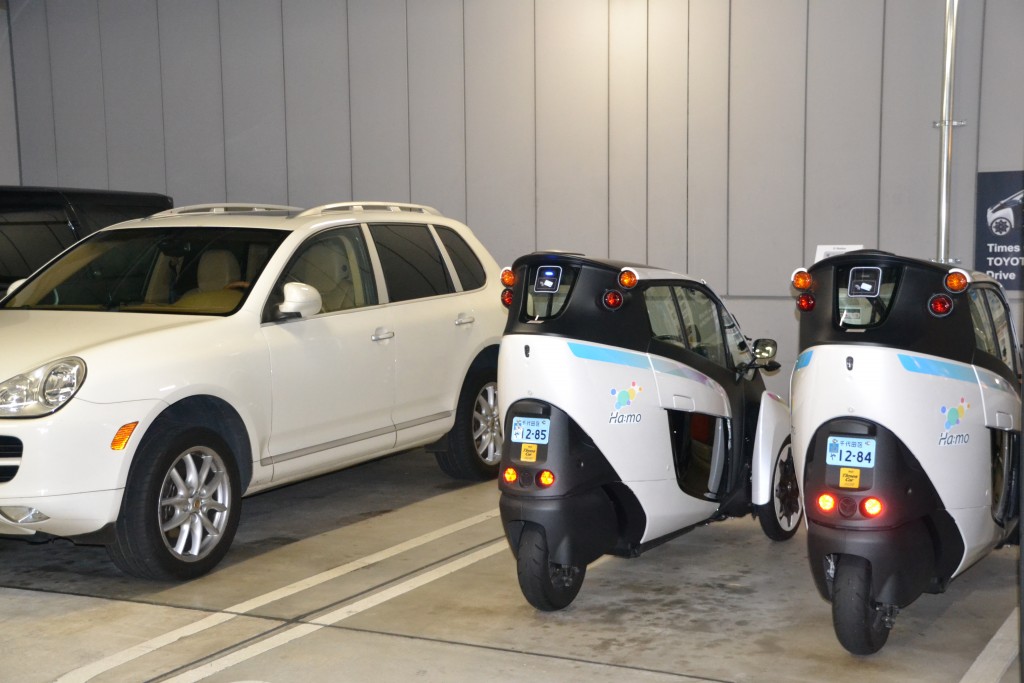2 major new cars are introduced this year. Toyota Mirai –future in Japanese- is the first production model with a fuel-cell power train fuelled by hydrogen and only emitting water. Renault Kwid is the cheapest modern attractive product ever developed. Both impressive outputs, results of the best of the know-how of the 2 brands are remarkable. Environmental sustainability and affordability are critical for the future of mobility for all. Yet an even more important breakthrough is taking place. Its impact on cost and environment is paramount. It will reshuffle the mobility business.
3 of main drivers for cost of ownership and emissions of a car are its size, its maximum speed and its passive safety (in case of a crash). Most of the time a car is used with 1 person on board, at low speed and on short distance. As most household own one or 2 cars, they buy a car for all year around usage (bring children to school, shopping, holidays…). There is therefore a huge gap between the most frequent usage of a car and its “over-specification”. With the development of crash avoidance and later autonomous driving systems, car sharing services using big data and digital, new services are developing. Eventually, the future is to on-demand autonomous cars optimized for each usage. This is why most of the cars on the roads will be very different from today’s models. Beside car ownership that will remain for some people, variety of services to be invented will appear.
For most of usages –urban, relatively low speed, short distance, one or 2 passengers -, the car will be optimized, simple, very light, small, one or 2 seats, emission free. It will be much cheaper to build and run than our polyvalent automobiles. As it will be shared and save on all aspects –insurance, parking…- the cost of mobility will be for the majority of users a fraction of what ownership costs today. So will its impact on environment. Other advantages are potentially huge in the area of decreased congestion, better usage of commuting time, economic growth…
We are technologically just a few years of seeing those objects on the road. There are legal, regulatory, security and cost issues but it is just a matter of when and how but not if this new mobility system will occur. The benefits are paramount! 5 billions people do not have access to individual mobility or mobility at all. One million die in traffic accidents every year not speaking of the negative environmental impacts of today’s cars (air, noise and visual)
The consequences for carmakers are in 3 areas:
- The first one is distribution. Dealers must reinvent themselves. Already more than 80% new car buyers have chosen their car on Internet before visiting a dealer. Used car online services offer much better choice than a parking lot. After sale’s activity is decreasing together with accidents and maintenance needs and innovations (IOT, 3D printing) will accelerate the move. All investments in dealerships should be done very cautiously.
- The second is technology with electronic, connectivity and big data becoming the new battleground. It means a shift of the center of gravity of carmakers’ activities to new expertise. In particular customers’ knowledge is critical. GAFA and e-commerce companies are much more qualified in this area.
- The third is the business model itself. Every week if not day, start-ups are proposing new services to always more fragmented customers needs. The “one size fits all” approach does not work anymore. Uber, partnered with Tata and will invest one billion $ in India. It could be the first country to leapfrog ownership. Japanese tech company DeNA intends to propose autonomous taxis in Tokyo for the Olympic Games in 2020.
Car manufacturers must choose to become experts in manufacturing or providers of mobility. And in the latter case clarify their brand promise. Dieter Zetsche, CEO of Daimler mentioned recently in an interview: “We don’t want to become contractors who have no direct contact with customers any more and supply hardware to third parties”(Deutsche Unternehmensbörse)
We are now at the exact moment where technology, society and customer demand meet to reinvent mobility. It will take years to shape itself but it is time to start preparing now.
This is why the biggest shift for automotive manufacturers will be in the way they manage their business. The bottom-up local model based on consensus is too slow, lacks global strategy, and will not encourage breakthrough. The top-down, centrally managed and controlled system will never be able to grasps all ideas, decide everything and understand local specificities. Another management is necessary. Strategy and brand will need to be defined collectively and adjusted regularly. Transparency should be replacing control and fast initiatives should be left to regional operations.
Above picture shows a self service car sharing station in Ginza in the center of Tokyo. On the right are 2 I-Roads. Toyota I-Road is 2 seats vehicle moved by electric powertrain, does not emit and weighs 300 kg. The Porsche Cayenne -on the left of the picture- is a 2100 kg vehicle moved by a 4.5 liter engine and emits around 250g of CO2 per km. Tokyo has already started entering the post car ownership era.

